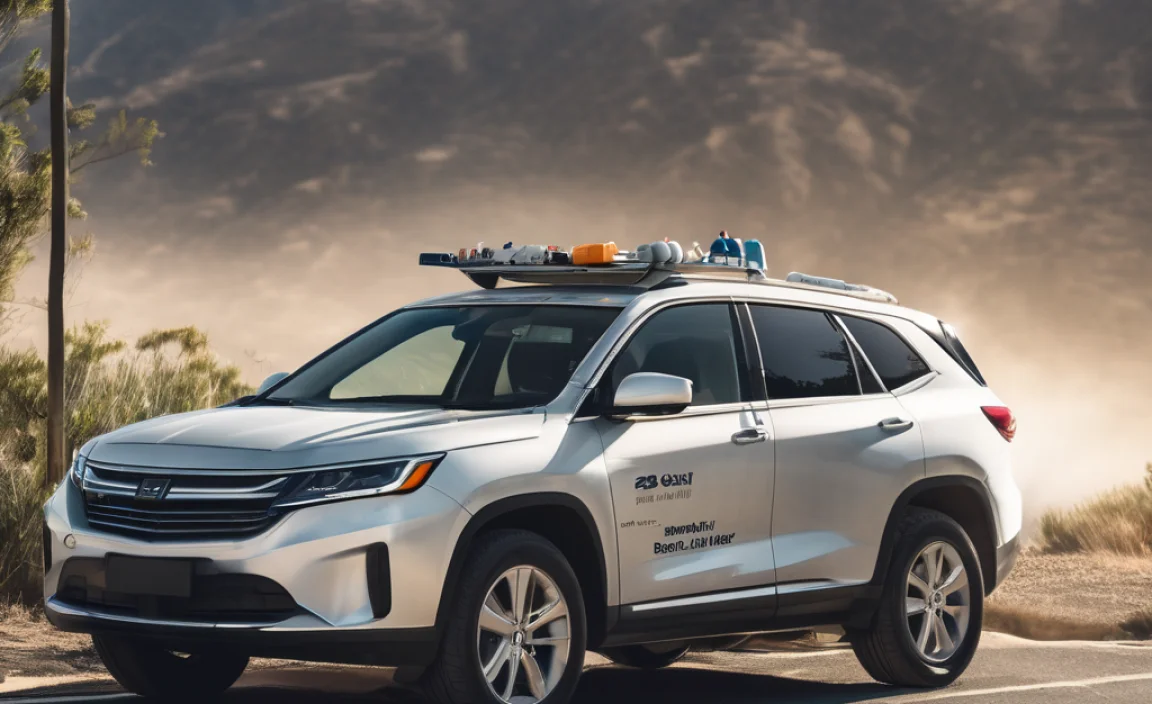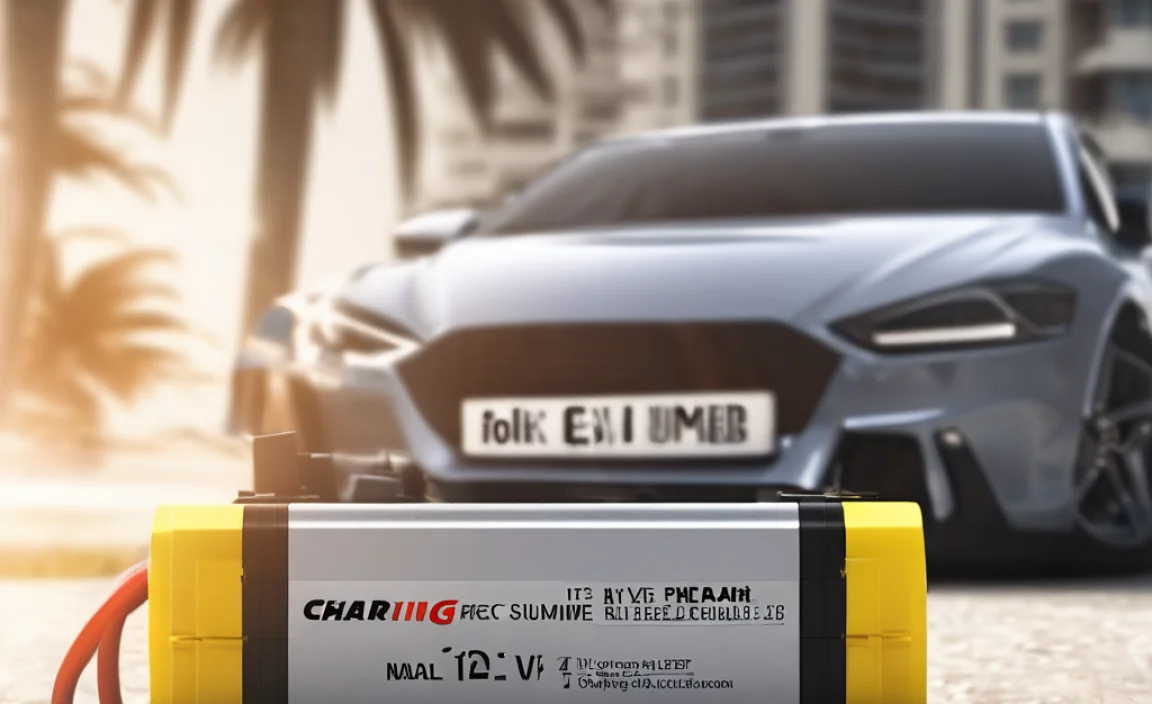Quick Summary:
The 96W USB-C Power Adapter is a reliable and fast charger for your MacBook Pro, ensuring it stays powered up for work or play. It uses USB-C technology, making it versatile and future-proof. This guide shows you how to use it effectively and safely.
Is your MacBook Pro battery always running low? It’s a common worry, especially when you’re in the middle of something important. Finding the right charger can feel like a puzzle, but luckily, the 96W USB-C Power Adapter for MacBook Pro is a fantastic solution. It’s designed to give your MacBook Pro the power it needs, quickly and safely. We’ll walk you through everything you need to know to get the most out of this adapter, making sure your laptop stays charged and ready.
Why the 96W USB-C Power Adapter?
MacBook Pros are powerful machines, and they need a solid power source to keep up. The 96W USB-C Power Adapter is specifically engineered to meet that demand. It delivers a robust 96 watts of power, which is ideal for charging even the most power-hungry MacBook Pro models. This ensures your laptop charges efficiently, whether you’re using it for heavy tasks like video editing or just browsing the web.
What’s great about USB-C is its versatility. This adapter isn’t just for charging; it’s part of a modern standard that’s making its way into many devices. This means you might be able to use it for other gadgets too! Plus, USB-C ports are designed to be reversible, so you can plug the cable in either way – no more fumbling in the dark.
Understanding Wattage: What 96W Really Means
When we talk about a “96W” adapter, we’re talking about its power output. Wattage is a measure of power, and in the context of a charger, it tells you how much energy it can deliver to your device. Think of it like the water pressure from a hose; higher wattage means more power can flow to your MacBook Pro, leading to faster charging times.
Your MacBook Pro has specific power requirements, and using an adapter with the correct or a higher wattage (as long as it’s USB-C compatible) is crucial. A 96W adapter is a great choice because it meets the needs of most MacBook Pro models, including those that require higher power for demanding tasks. Using a lower wattage adapter might mean your MacBook charges very slowly, or even drains its battery while plugged in if you’re doing a lot of intensive work.
The Magic of USB-C Technology
USB-C is a game-changer in how we connect and power our devices. It’s a small, oval-shaped connector that’s becoming the industry standard. Here’s why it’s so popular:
- Reversible Connector: No more guessing which way the plug goes. USB-C ports and cables are symmetrical, making connections effortless.
- High Power Delivery: USB-C can handle much higher wattages than older USB types, which is why it’s perfect for powering laptops like the MacBook Pro.
- Data Transfer Speed: Beyond power, USB-C ports often support very fast data transfer speeds. While the power adapter focuses on charging, the underlying technology is robust.
- Versatility: The same USB-C port can be used for charging, connecting displays, and transferring data.
This interoperability means that the 96W USB-C Power Adapter for MacBook Pro isn’t just a charger; it’s a gateway to a more streamlined and efficient charging experience.
Getting Started with Your 96W USB-C Power Adapter
Setting up and using your 96W USB-C Power Adapter is refreshingly simple. Apple designs its accessories with ease of use in mind. Here’s what you need to do:
Step 1: Unpack Your Adapter and Cable
Carefully take your 96W USB-C Power Adapter and the USB-C charging cable out of their packaging. Inspect them for any obvious damage. While rare, it’s always good practice to check.
Step 2: Identify the Ports
Your 96W adapter will have a USB-C port. This is where you’ll plug in your USB-C to USB-C charging cable. Your MacBook Pro will also have one or more USB-C ports, typically located on the sides of the laptop.
Step 3: Connect the Cable to the Adapter
Plug one end of the USB-C charging cable into the USB-C port on the 96W power adapter. It should click in smoothly. There’s no wrong way to plug it in, thanks to the reversible design.
Step 4: Connect the Other End to Your MacBook Pro
Take the other end of the USB-C cable and plug it into an available USB-C port on your MacBook Pro. Again, it should go in easily without force. Once connected, you should see the charging indicator on your MacBook Pro’s battery icon, or you might get a notification indicating it’s charging.
Step 5: Plug the Adapter into a Wall Outlet
Finally, plug the power adapter itself into a working wall socket. Ensure the outlet is easily accessible and not overloaded with other high-power devices. For the best charging performance and safety, it’s advisable to use a dedicated outlet or one on a circuit that isn’t heavily used.
Optimizing Charging Speed and Efficiency
While the 96W adapter is designed for fast charging, a few things can influence how quickly your MacBook Pro powers up.
Using the Right Cable
It’s essential to use a USB-C cable that supports high power delivery. Apple’s 96W adapter typically comes with a cable designed for this, or you should use a reputable USB-C cable rated for at least 100W (as USB-C cables have a safety margin). Using a low-quality or under-rated cable can limit charging speed or, in worst-case scenarios, pose a safety risk. Look for cables that explicitly state support for high wattage charging.
Charging While the MacBook is On
If your MacBook Pro is on and you’re using it, especially for demanding tasks, it will draw some power. This means the charging speed might be slower compared to when the MacBook is asleep or turned off. For the absolute fastest charge, close all applications and let your MacBook Pro go to sleep or shut it down while it’s plugged in.
Optimizing MacBook Pro Settings
Your MacBook Pro has built-in features to manage battery health and charging. Sometimes, features like “Optimized Battery Charging” might slightly slow down the final phase of charging to extend the battery’s lifespan.
You can find these settings in System Settings (or System Preferences) > Battery > Battery Health. If you need a quick full charge, you can temporarily disable these features, but generally, they are recommended for long-term battery health.
Apple’s official support site offers more details on battery health management: Apple Support on Battery Health.
Checking Charging Status
To check if your MacBook Pro is charging, look at the battery icon in the menu bar. You’ll typically see a lightning bolt symbol inside it when it’s actively charging. You can also click on the battery icon to see more details about its status.
Safety First: Best Practices for Using Your Power Adapter
Safety is paramount when dealing with any electrical device. Here are some essential tips to keep you and your MacBook Pro safe:
- Avoid Damaged Cables or Adapters: Never use a power adapter or cable that shows signs of fraying, cracking, or other damage. If you notice any issues, replace it immediately with a genuine Apple adapter or a certified third-party equivalent.
- Keep Away from Liquids and Heat: Don’t expose your adapter or cable to water or other liquids. Also, avoid placing it near sources of heat like radiators or in direct sunlight for extended periods. Proper ventilation is key.
- Use Certified Accessories: Always opt for genuine Apple power adapters and cables or those certified by reputable third-party manufacturers. Look for USB-IF certification for USB-C cables and accessories. Organizations like the USB Implementers Forum (USB-IF) ensure products meet safety and performance standards.
- Don’t Overload Outlets: Plug your adapter into a wall outlet that can safely handle its power draw. Avoid using it with old or damaged power strips that might be overloaded.
- Unplug When Not in Use (Optional but Recommended): While modern chargers are designed to be safe when left plugged in, it’s a good habit to unplug the adapter from the wall when you’re done charging and won’t be using it for a long time. This can save energy and reduce potential risks.
Troubleshooting Common Issues
Even with the best accessories, sometimes things don’t work as expected. Here are a few common issues and how to fix them.
MacBook Pro Not Charging
If your MacBook Pro isn’t charging when plugged in, try these steps:
- Check Connections: Ensure the USB-C cable is securely plugged into both the adapter and your MacBook Pro. Try a different USB-C port on your MacBook Pro.
- Inspect Cable and Adapter: Look for any physical damage to the cable or the adapter.
- Try a Different Cable: If you have another USB-C cable that you know works, try using it. This helps determine if the cable is the culprit.
- Try a Different Outlet: Plug the adapter into a different wall socket to rule out an issue with the electrical outlet.
- Restart Your MacBook Pro: Sometimes, a simple restart can resolve temporary software glitches that might be affecting charging.
- Reset SMC (System Management Controller): For Intel-based Macs, resetting the SMC can resolve power-related issues. The process varies depending on your Mac model. You can find instructions on Apple’s official support site.
Slow Charging Speed
If you’re experiencing slower-than-expected charging, consider the following:
- Check Cable & Adapter Wattage: Ensure you are using the 96W adapter and a cable rated for high power delivery.
- Assess Usage: Are you using your MacBook Pro for intensive tasks? This will slow down charging. For faster charging, let the MacBook mostly idle or sleep.
- Battery Health: Older batteries might hold less charge or charge slower. Check your Battery Health settings.
Adapter Gets Warm
It’s normal for a power adapter, especially one delivering significant wattage like 96W, to become warm during use. However, it should not be excessively hot to the touch. Ensure the adapter has adequate ventilation and isn’t covered by blankets or other materials. If it feels alarmingly hot, unplug it immediately and have it inspected.
Comparing 96W Adapters: Apple vs. Third-Party
When it comes to power adapters, you have options. While genuine Apple adapters are built to exact specifications, there are many reputable third-party alternatives. Here’s a quick comparison:
| Feature | Genuine Apple 96W USB-C Adapter | Reputable Third-Party 96W+ USB-C Adapter |
|---|---|---|
| Compatibility | Guaranteed to work perfectly with all compatible MacBook Pro models. | Generally compatible, but always check the manufacturer’s specifications for your specific MacBook Pro model. |
| Build Quality & Reliability | Excellent, designed for optimal performance and longevity. | Varies. High-quality brands offer excellent, reliable products. Lower-quality brands can be inconsistent. |
| Safety Certifications | Meets all Apple and safety standards. | Look for certifications like UL, CE, FCC, and USB-IF. This ensures it meets safety standards. |
| Price | Typically higher. | Often more affordable. |
| Warranty | Apple’s standard warranty. | Varies by manufacturer, often 1-2 years. |
If you choose a third-party adapter, always purchase from trusted brands that have clear safety certifications and good reviews. Some popular and reliable third-party brands for USB-C chargers include Anker, Belkin, and UGREEN. It’s always a good idea to check if the adapter has received USB-IF certification, which signifies it meets stringent USB standard requirements.
Travel and Portability
The 96W USB-C Power Adapter is relatively compact given its power output. Its design often includes foldable prongs (depending on the region’s plug) which makes it easier to pack. The USB-C cable can be wrapped neatly, making it a convenient charging solution for travel.
When traveling, it’s also wise to be aware of power outlet differences. You might need a universal travel adapter for international trips to ensure you can plug into foreign sockets. Always ensure the voltage compatibility; most modern adapters, including Apple’s, are designed for a wide range of voltages (e.g., 100-240V), making them suitable for international use, but it’s good practice to confirm.
The Future of Charging: USB-C PD
The 96W USB-C Power Adapter is a prime example of USB Power Delivery (USB PD) in action. USB PD is a specification that allows for higher power levels and intelligent negotiation between the charger and the device being powered. This means the charger and your MacBook Pro “talk” to each other to determine the optimal amount of power to deliver, ensuring both speed and safety.
As USB PD technology advances, we’re seeing even higher wattages become common, and chargers are becoming more efficient. This makes the 96W adapter a solid, current-generation solution that embodies this forward-thinking technology.
Frequently Asked Questions (FAQs)
Q1: Will the 96W USB-C Power Adapter work with older MacBook Pro models?
A: Yes, it should work with any MacBook Pro that uses a USB-C port for charging. Older models might not charge as quickly because their battery systems are designed for lower wattage, but it will still charge safely. Apple’s website provides a compatibility list for their adapters.
Q2: Can I use the Apple 96W USB-C charger to charge my iPhone or iPad?
A: Absolutely! The 96W USB-C adapter is fully compatible with iPhones and iPads that support USB-C charging. In fact, it will charge them much faster than their standard chargers.
Q3: Is it safe to leave my MacBook Pro plugged into the 96W adapter all the time?
A: Yes, generally it is safe. Modern MacBooks and their chargers are designed with sophisticated battery management systems that prevent overcharging. They will stop charging once the battery is full. However, consistent charging might slightly reduce battery lifespan over the very long term, which is why Apple includes features like “Optimized Battery Charging” in macOS.
Q4: What happens if I use a charger with a higher wattage, like 100W or 140W?
A: As long as it’s a reputable USB-C Power Delivery (USB PD) compatible charger, using a higher wattage charger than your MacBook Pro needs is perfectly safe. Your MacBook Pro will only draw the amount of power it requires, up to its maximum supported charging rate. The extra wattage simply means the charger has the capacity to deliver more if needed by a different device.
Q5: How do I know if my USB-C cable is good enough for the 96W adapter?
A: Look for cables that are specifically rated for 100W or mention support for USB Power Delivery (USB PD). Cables that come with high-wattage laptops or are from reputable brands like Apple, Anker, or Belkin are usually a safe bet. Avoid generic, unbranded cables, as they might not meet safety or performance standards.
Q6: Does the 96W adapter have surge protection?
A: Genuine Apple power adapters incorporate safety features to protect against power surges and overheating. Third-party adapters should also have these protections, which is why checking for certifications like UL or CE is important.
Conclusion
The 96W USB-C Power Adapter for MacBook Pro is an excellent investment for anyone looking to keep their powerful laptop charged and ready for action. Its high wattage ensures quick and efficient charging, while the universal USB-C connection makes it a versatile accessory for your other devices. By understanding how to use it correctly, following safety guidelines, and knowing how to troubleshoot common issues, you can ensure a reliable and long-lasting power solution.
Remember, investing in quality charging accessories like the 96W USB-C adapter



